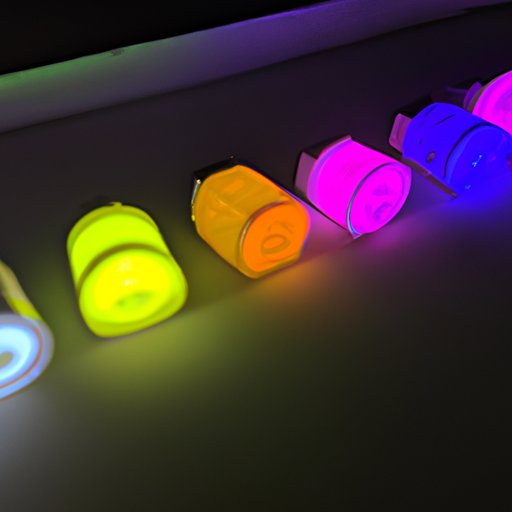Introduction
LED stands for “light-emitting diode” and is a type of solid state lighting that has revolutionized the way we see the world. LED lights are small, efficient, and durable, making them an ideal choice for many applications. This article will explore when LED lights were invented and how they have impacted our lives.
Historical Timeline of LED Lights: From Invention to Popularity
In 1962, Nick Holonyak Jr. made a breakthrough discovery when he invented the first light-emitting diode (LED). His invention was based on previous work done by James R. Biard and Gary Pittman who had developed the first infrared LED in 1961. Holonyak’s invention was the first visible-spectrum LED and marked the beginning of a new era in lighting technology.
It would take several decades before LED lights became widely used. In the 1990s, the development of high-power LEDs made them more accessible and affordable. This led to increased interest in the technology and eventually, it began to be used in commercial and residential applications. By the early 2000s, LED lighting had become a mainstream option for lighting.

How LED Lighting Changed the Way We See Our World
LED lighting has had a dramatic effect on the way we see our world. The efficiency and cost savings of LED lighting make it an attractive option for both homeowners and businesses. According to the U.S. Department of Energy, LED lighting can use up to 75% less energy than traditional lighting sources such as incandescent bulbs. This means that LED lighting can save money on electricity bills and reduce the need for additional power plants.
LED lighting also offers improved color rendering compared to other lighting sources. This means that colors appear more vibrant and true to life under LED lighting. Additionally, LED lights are much more durable than traditional lighting sources, with some lasting up to 50,000 hours or more. This makes LED lighting a great choice for areas that require lighting for long periods of time.
What Led to the Inventor of LED Lights?
Nick Holonyak Jr.’s invention of the first visible-spectrum LED was the result of years of research and development. He was able to discover the principle of LEDs by studying the behavior of semiconductors. He then worked with fellow scientists to develop new technology that allowed for the mass production of LEDs. This new technology made LED lighting more accessible and affordable, leading to its widespread adoption.
LED Lights: What Does the Future Hold?
The future of LED lighting is bright, with potential uses ranging from street lighting to medical treatments. Smart LED lighting systems are being developed that will be able to respond to voice commands and provide personalized lighting experiences. Additionally, LED technology is being explored for use in agriculture, automotive, and aerospace industries.
However, there are some challenges that may arise in the future. As LED technology improves, the cost of production could increase. Additionally, LED lighting may face competition from other forms of lighting such as OLEDs (organic light-emitting diodes) or quantum dots. But with continued research and development, LED lighting is sure to remain a popular choice for years to come.

The Environmental Benefits of LED Lighting Technology
LED lighting has numerous environmental benefits. One of the most important is the reduction in energy consumption. LED lights require less energy to produce the same amount of light as traditional lighting sources, which helps reduce greenhouse gas emissions. Additionally, LED lights have a longer lifespan than traditional lights, meaning they need to be replaced less often, resulting in fewer discarded products.
LED lighting also produces less heat than traditional lighting sources. This reduces the amount of energy needed to cool buildings and helps keep temperatures down in hot climates. Finally, LED lighting helps reduce light pollution, as the light emitted is directed downwards rather than upwards, reducing skyglow and improving visibility of stars and planets.
Conclusion
LED lights have come a long way since their invention by Nick Holonyak Jr. in 1962. Today, LED lighting is used in a wide range of applications, from home lighting to street lighting. Not only does LED lighting offer increased efficiency and cost savings, but it also has numerous environmental benefits. As LED technology continues to evolve, it is sure to remain a popular choice for many years to come.
(Note: Is this article not meeting your expectations? Do you have knowledge or insights to share? Unlock new opportunities and expand your reach by joining our authors team. Click Registration to join us and share your expertise with our readers.)
